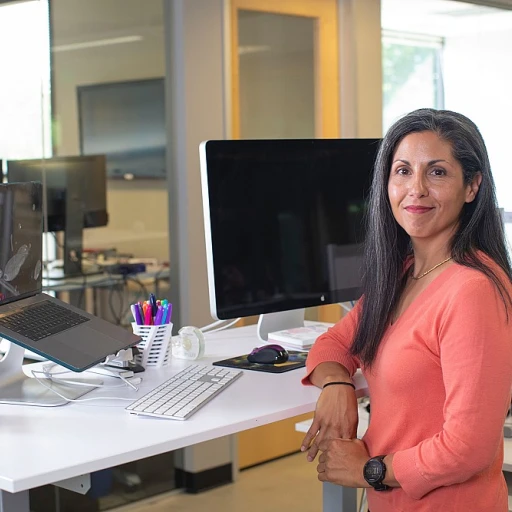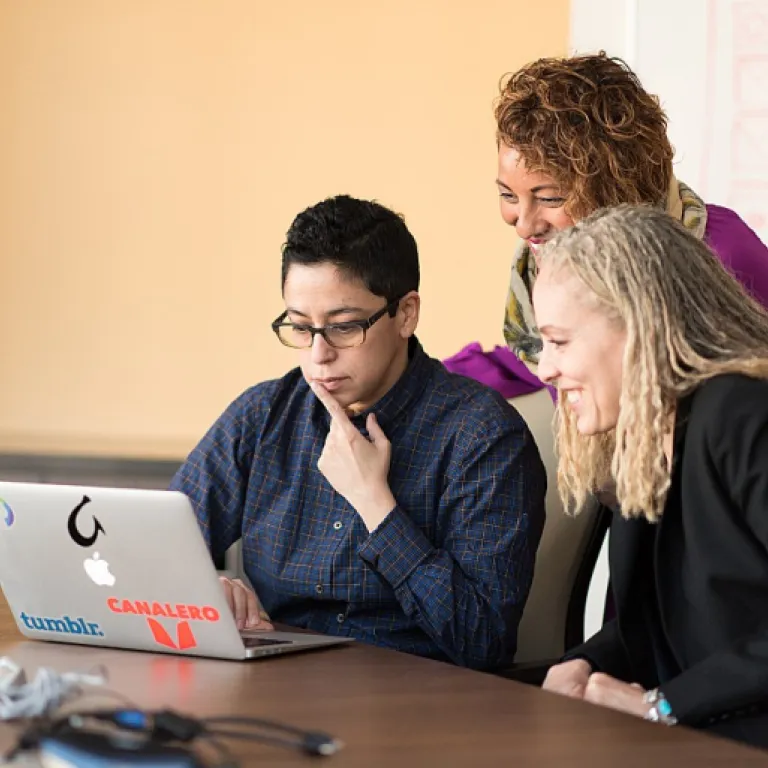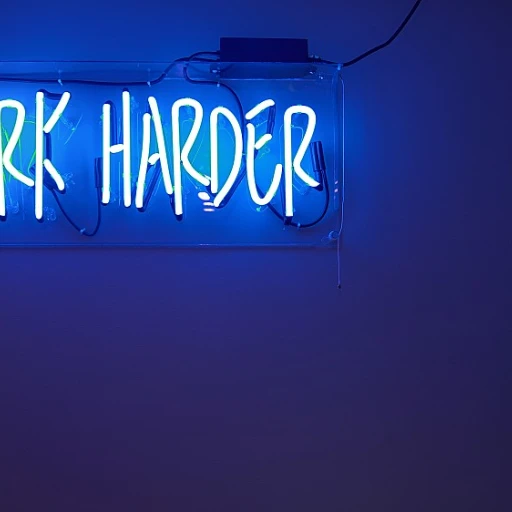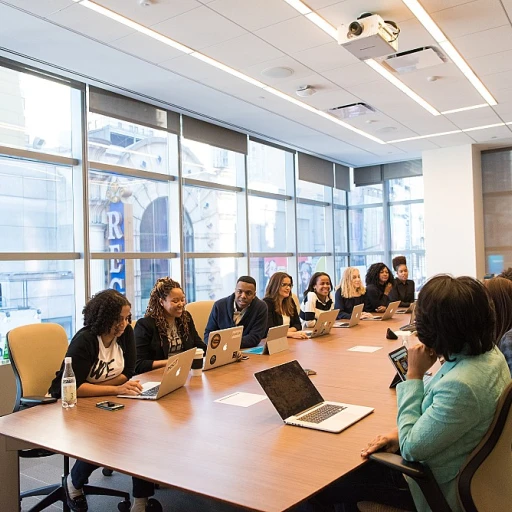
Understanding the Role of Creativity in Mentoring
The Impact of Imagination in Mentoring Dynamics
Understanding the role of creativity in mentoring is essential to foster an environment where both mentors and mentees can thrive. Creativity is not merely about unconventional thought; it's about incorporating innovative solutions into everyday tasks. For mentors, applying creativity in their sessions can lead to more engaging and effective outcomes. By integrating creative techniques, mentors can help guide their mentees through complex work challenges and inspire them to explore new horizons. Creative approaches encourage mentees to think outside the box, allowing them to tackle problems from different angles. This can be especially beneficial for those in industries that demand constant innovation, such as social media, the arts, or any role that involves creative work. When mentors actively engage their creativity, they can better relate to their mentees, fostering a connection that enables productive collaboration. Moreover, being creative isn't just about generating ideas; it's about developing the enthusiasm to implement them. Therefore, balancing creativity with structured time management is necessary. By managing time well and setting realistic deadlines, mentors can focus their efforts where they are most needed, ensuring tasks are completed effectively while still allowing for innovation. Regular breaks are also crucial in maintaining creativity without sacrificing productivity. These breaks provide both mentors and mentees the opportunity to recharge and refocus, ultimately enhancing their productivity when they return to their tasks. Creative moments arise from periods of reflection, and by scheduling moments of downtime, mentors can maximize the outcomes of their sessions. For those seeking to harness creativity and time management in their mentoring approach, exploring the potential of group coaching programs can provide a broader perspective and enhance learning outcomes. For more on how group dynamics can support creative development, consider exploring the benefits through group coaching programs.Time Management Techniques for Mentors
Mastering the Art of Time Management
Time management is crucial for mentors striving to balance their creative instincts with the structured demands of their role. Effective time management techniques can significantly enhance productivity and ensure that both mentors and mentees benefit from the mentoring relationship.
Prioritizing Tasks for Maximum Impact
One of the first steps in managing time well is to prioritize tasks. Mentors should identify the most critical tasks that align with their goals and those of their mentees. By focusing on high-impact activities, mentors can ensure that their time is spent effectively, leading to better outcomes.
Setting Realistic Deadlines
Realistic deadlines are essential in managing time effectively. Mentors should set achievable timelines for each task, allowing for flexibility when unexpected challenges arise. This approach not only helps in maintaining a steady workflow but also reduces stress, enabling mentors to keep their creative energies intact.
Incorporating Regular Breaks
Regular breaks are vital for maintaining focus and productivity. By scheduling short breaks throughout the day, mentors can recharge and return to their tasks with renewed energy. This practice is especially beneficial for those engaged in creative work, as it allows for fresh perspectives and innovative solutions.
Utilizing Tools for Better Management
There are numerous tools available to assist mentors in managing their time effectively. From digital calendars to task management apps, these resources can help in organizing tasks, setting reminders, and tracking progress. By leveraging these tools, mentors can streamline their workflow and enhance their overall efficiency.
For more insights on how to enhance your mentoring approach, consider exploring group coaching programs as a complementary strategy.
Integrating Creativity with Structured Planning
Harmonizing Creativity with Structured Agendas
Integrating creativity into structured planning requires finesse, especially in the fast-paced environments where professionals operate. It's not simply about infusing creative ideas into a rigid timeline; it's about weaving creativity throughout your work day to enhance productivity rather than hinder it. One effective approach is to allocate specific times for creative tasks. This involves identifying your ideal creative hours—those moments in your day when inspiration flows more freely—and dedicating them to tasks that benefit from creative input. Such structured creative time ensures that you harness your creativity when it's most potent. In managing time wisely, setting realistic deadlines is key. Creative tasks often have the propensity to expand, consuming more time than initially anticipated. By setting achievable deadlines, you promote a disciplined approach to completing tasks without stifling creativity. Pairing this with regular breaks can help maintain your focus and prevent creative burnout. Working with predefined blocks of time dedicated to distinct types of work promotes better productivity. For instance, you might reserve mornings for strategic planning and analytical tasks, while afternoons could be set aside for creative work. This day-to-day structure not only helps manage time but also caters to the creative's need for flexibility within a framework. Moreover, mentors can use systematic tools to integrate creativity within structured plans. Project management software and digital tools for workflows are particularly helpful. Regularly reviewing these plans and adjusting them in alignment with creative insights ensures the schedules remain both realistic and flexible. Balancing creativity with structured planning also involves managing expectations—both your own and those of your mentees. Open discussions about the role of creative flow in project timelines can help all involved parties understand and appreciate the need for both creative bursts and scheduled tasks. Ultimately, a harmonious balance of creativity and structured planning can transform your mentoring journey. To explore further on creating engaging beginnings for collaborations, consider crafting the perfect welcome email for new hires, an exercise in blending structure with creativity.Overcoming Challenges in Balancing Creativity and Time
Challenges in Achieving Harmony Between Creativity and Time Efficiencies
Balancing creativity with effective time management can be an intricate task for mentors striving to offer their best guidance. Struggling to maintain this balance is a common challenge in the realm of professional mentoring. Creatives, often immersed in their artistic passions, may find that their creative processes demand more time than they can realistically allocate while trying to adhere to structured time management practices.
One of the key challenges faced is in maintaining productivity without stifling the creative flow. While it is essential to allocate time effectively to encourage focus and meet realistic deadlines, it can be difficult to forecast just how many hours a creative endeavor will take. Sticking to a rigid schedule might detract from the quality of creative output. Therefore, it's pivotal to integrate flexible working strategies while ensuring that tasks are completed as planned.
Another obstacle can arise from the vast array of distractions present in today’s digital age, such as social media. These can eat away at precious creative time and must be managed diligently. Mentors can help encourage regular breaks to replenish mindsets, providing the creative space needed for inspiration while ensuring that work time is used wisely.
Ultimately, achieving balance is about supporting both productivity and creativity equally. Some mentors find success by setting aside specific hours each day where mentees are encouraged to delve deeply into their creative tasks. Others emphasize the importance of working within dedicated time blocks to manage tasks and maintain control over workloads.
In overcoming these challenges, it is vital that mentors and mentees collaborate to develop strategies that play to their strengths, nurture their creativity, and improve their time management skills. Such an approach can lead to not only better outcomes but also a more enriched mentoring experience, enhancing the growth and development of all involved.
Case Studies: Successful Mentoring with Creativity and Time Management
Real-Life Examples of Effective Mentoring Practices
Examining real-world case studies can offer valuable insights into how successful mentoring is achieved by balancing creativity and time management. In the face of today's demanding work environments, mentors who focus on creative problem-solving while efficiently managing time can truly enhance their mentees' growth. Consider a marketing firm where mentors guide young creatives striving to enhance their productivity while maintaining originality. The mentor encourages regular breaks and structured creative time, allowing mentees to rejuvenate and tackle complex tasks with a fresh perspective. As a result, mentees find they can produce better work in fewer hours, making their efforts more efficient and impactful. In another study involving a tech startup, mentors implemented effective time management techniques, such as setting realistic deadlines and organizing long-term projects into smaller, manageable tasks. By reserving specific hours each day for focused, uninterrupted work periods, remote-working mentees learned to balance creativity with the necessary structure. This method improved their time management and creativity, resulting in innovative solutions that advanced the company's objectives. Furthermore, in the sector of performing arts, successful mentoring has been shown to incorporate structured planning with room for spontaneity. Here, mentors provide a framework for rehearsals and creative exploration, ensuring that artists not only meet their production timelines but also have the opportunity to explore their artistic impulses when inspiration strikes. This balance leads to projects that are both well-organized and richly creative. Finally, the field of graphic design highlights the importance of focusing creatively within deadlines. Mentors guide their mentees in utilizing digital project management tools that facilitate both individual and collaborative creative work. Emphasizing the strategic use of social media and design software, these tools help creatives maintain an organized workflow while providing flexibility to innovate and iterate. This has led to higher productivity and enhanced the final output quality. Such case studies underline that when creativity is nurtured with effective time management practices, the potential for groundbreaking achievements within professional mentoring is immense. These examples further demonstrate how structured plans can coexist with and even bolster creativity, helping individuals and organizations achieve their goals.Tools and Resources for Mentors
Amplifying Mentoring Effectiveness Through Tools
Incorporating the right tools and resources is essential for mentors aiming to balance creativity and time management. These instruments enhance productivity, facilitate the creative process, and allow mentors to work efficiently within the often-limited hours of a day.
- Project Management Tools: Tools like Trello and Asana help mentors create realistic deadlines and manage time effectively. They allow for organizing tasks and keeping creative work prioritized, ensuring creatives meet their goals.
- Time Tracking Software: Apps such as Toggl assist in monitoring where time is spent and identifying areas for improvement. By understanding the hours day where productivity peaks, mentors can allocate creative time more efficiently.
- Focus Enhancement Apps: Tools such as Focus@Will play music that boosts concentration during creative sessions. Leveraging such resources can increase work focus and improve the quality of work time.
- Creative Platforms: Resources like Canva or Adobe Creative Cloud allow mentors and mentees to express innovation without exhausting too much creative time. These platforms can amplify creativity while supporting proper management of tasks.
- Social Media Operators: Using Buffer or Hootsuite can save management time on social media tasks, allowing mentors and mentees to maintain an online presence without compromising on more essential work time.
Implementing these tools not only helps manage time when juggling various tasks, but they also ensure that creatives don't feel overwhelmed, striking a balance that enhances productivity and nurtures creativity in the mentoring relationship.












